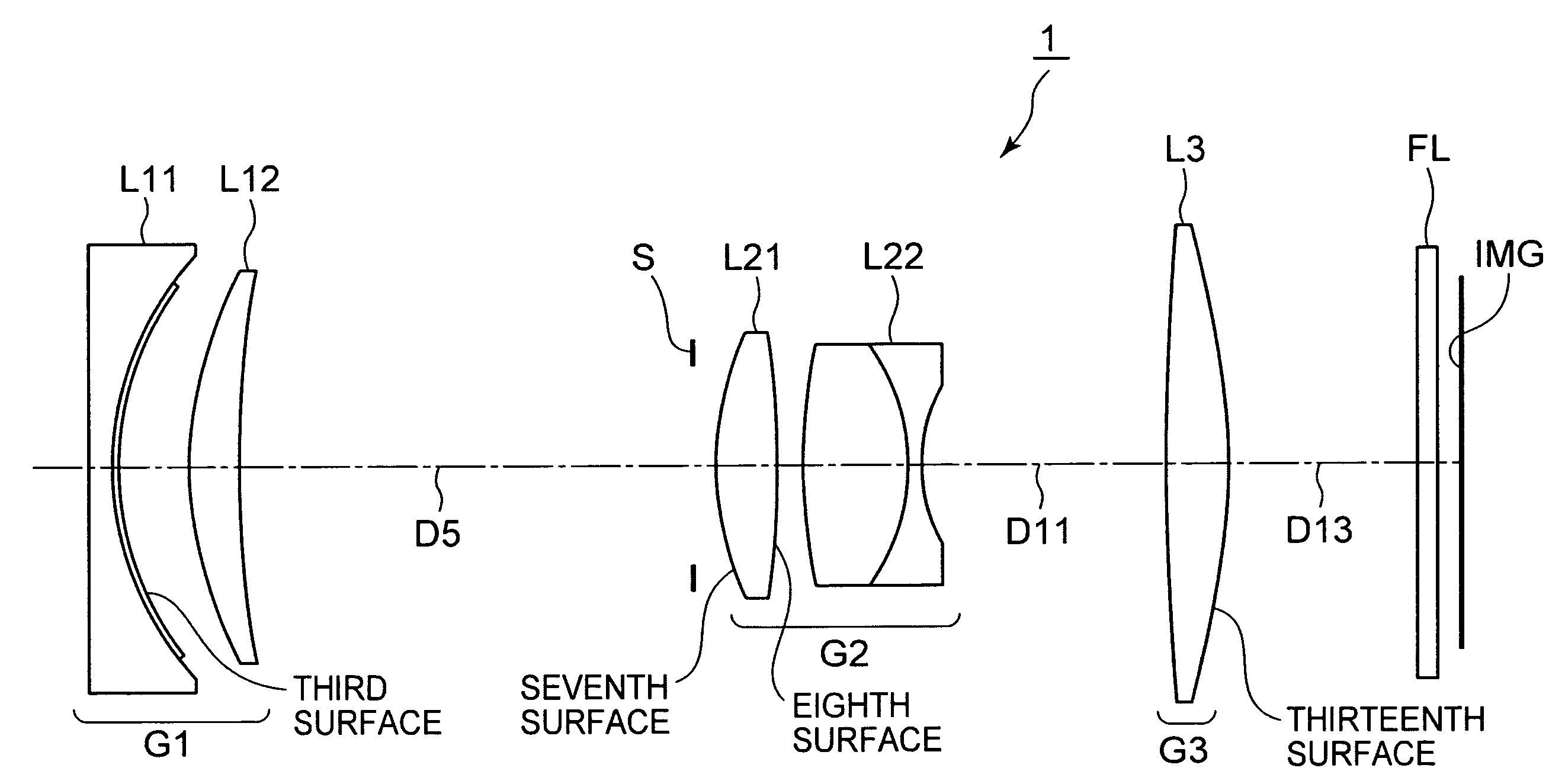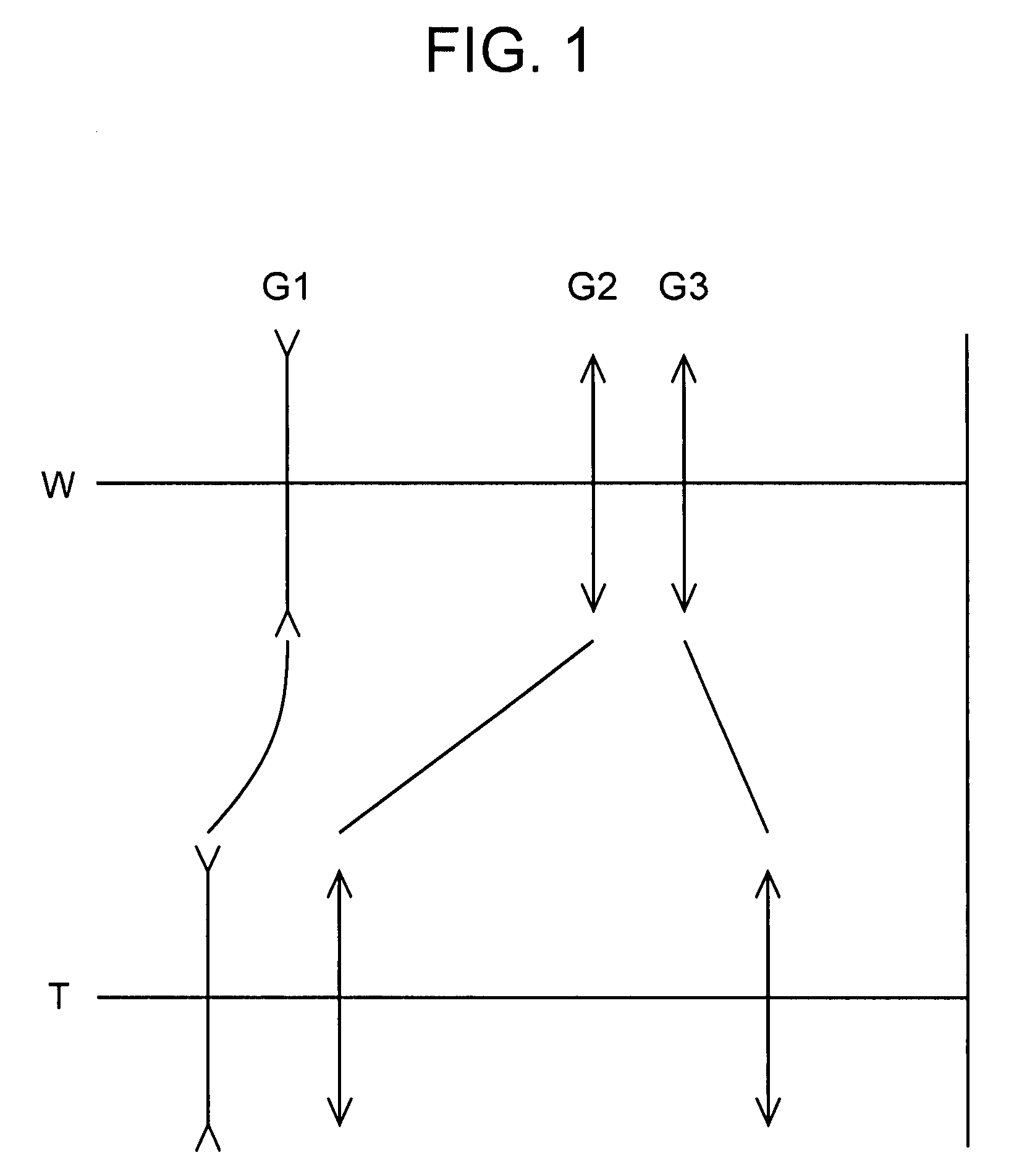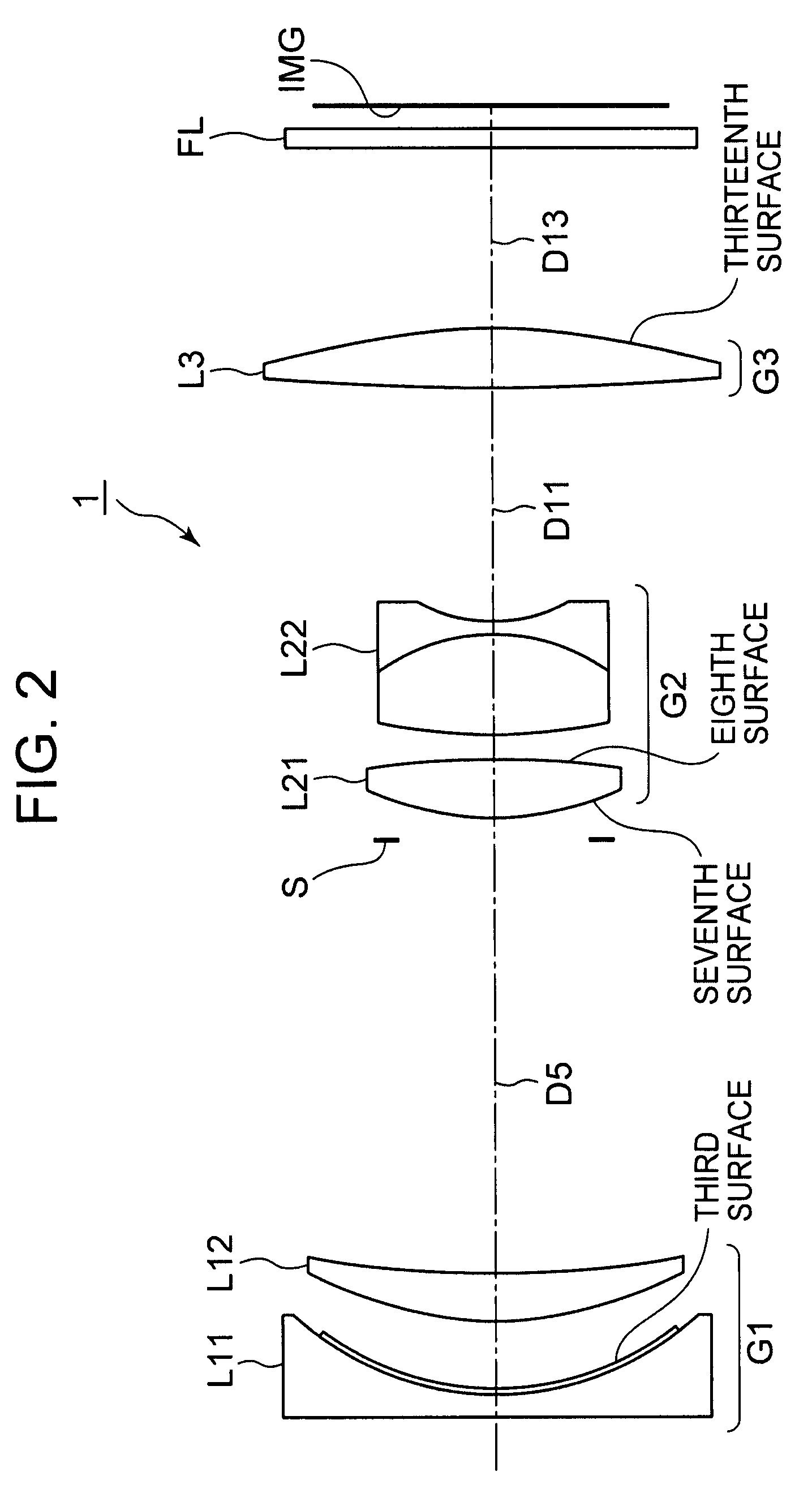Zoom Lens and image pickup apparatus
a pickup apparatus and zoom lens technology, applied in the field of new zoom lens and new image pickup apparatus, can solve the problems of difficult to and the tilting of the cam track for moving the first lens group too steep to ensure sufficient stop accuracy, etc., to achieve sufficient stop accuracy and reduce the height of the camera body.
- Summary
- Abstract
- Description
- Claims
- Application Information
AI Technical Summary
Benefits of technology
Problems solved by technology
Method used
Image
Examples
first embodiment
[0094]FIG. 2 shows the lens configuration of a zoom lens 1 according to the present invention. A first lens group G1 is configured by arranging, in order from an object side to the image side, a negative lens L11 whose concave surface is directed to the image side, and a positive lens L12 of meniscus shape whose convex surface is directed to the object side. A second lens group G2 is configured by arranging, in order from the object side to the image side, a positive lens L21 of biconvex shape and a cemented negative lens L22 composed of a positive lens of biconvex shape and a negative lens of biconcave shape. A third lens group G3 is composed of a positive lens L3 of biconvex shape. The negative lens L11 of the first lens group G1 is a compound lens in which a thin aspherical resin layer made of plastic is laminated on the image side lens surface. An aperture stop S is located adjacent to the object side of the second lens group G2. In zooming from the maximum wide angle state to t...
second embodiment
[0102]FIG. 6 shows the lens configuration of a zoom lens 2 according to the present invention. A first lens group G1 is configured by arranging, in order from an object side to an image side, a negative lens L11 whose concave surface is directed to the image side, and a positive lens L12 of meniscus shape whose convex surface is directed to the object side. A second lens group G2 is configured by arranging, in order from the object side to the image side, a positive lens L21 of biconvex shape, and a cemented negative lens L22 composed of a positive lens of biconvex shape and a negative lens of biconcave shape. A third lens group G3 is composed of a positive lens L3 of biconvex shape. An aperture stop S is located adjacent to the object side of the second lens group G2. In zooming from the maximum wide angle state to the maximum telephoto state, the aperture stop S is moved together with the second lens group G2. A filter FL is disposed between an image surface IMG and the third lens...
third embodiment
[0110]FIG. 10 shows the lens configuration of a zoom lens 3 according to the present invention. A first lens group G1 is configured by arranging, in order from an object side to an image side, a negative lens L11 whose concave surface is directed to the image side, and a positive lens L12 of meniscus shape whose convex surface is directed to the object side. A second lens group G2 is configured by arranging, in order from the object side to the image side, a positive lens L21 of biconvex shape, and a cemented negative lens L22 composed of a positive lens of biconvex shape and a negative lens of biconcave shape. A third lens group G3 is composed of a positive lens L3 of biconvex shape. An aperture stop S is located adjacent to the object side of the second lens group G2. In zooming from the maximum wide angle state to the maximum telephoto state, the aperture stop S is moved together with the second lens group G2. A filter FL is disposed between an image surface IMG and the third len...
PUM
 Login to View More
Login to View More Abstract
Description
Claims
Application Information
 Login to View More
Login to View More - R&D
- Intellectual Property
- Life Sciences
- Materials
- Tech Scout
- Unparalleled Data Quality
- Higher Quality Content
- 60% Fewer Hallucinations
Browse by: Latest US Patents, China's latest patents, Technical Efficacy Thesaurus, Application Domain, Technology Topic, Popular Technical Reports.
© 2025 PatSnap. All rights reserved.Legal|Privacy policy|Modern Slavery Act Transparency Statement|Sitemap|About US| Contact US: help@patsnap.com



